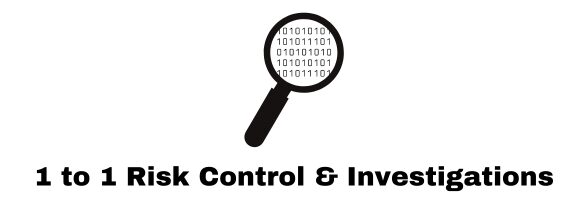405-458-5710
Confidentiality Guaranteed
405-458-5710
Confidentiality Guaranteed
You are Reading:
-
1 to 1 Risk Control & Investigations > Blog > Identity Theft > What to Do When You Are a Victim of Identity Theft

Jul
What to Do When You Are a Victim of Identity Theft
Identity theft is a devastating experience that can leave victims feeling vulnerable and overwhelmed. If you find yourself a victim of identity theft, it’s crucial to act swiftly and methodically to mitigate the damage and restore your financial and personal security. This guide will walk you through the necessary steps to take when you discover you are a victim of identity theft.
Recognize the Signs: The first step in addressing identity theft is recognizing the signs. These may include unexpected withdrawals from your bank account, unfamiliar charges on your credit cards, missing bills or statements, receiving calls from debt collectors about debts you didn’t incur, or being denied credit for no apparent reason. Pay attention to any unusual activity and trust your instincts if something feels off.
Secure Your Accounts: Immediately secure your accounts to prevent further unauthorized access. Change the passwords and PINs for all your online and financial accounts. Use strong, unique passwords for each account, incorporating a mix of letters, numbers, and special characters. Enable two-factor authentication (2FA) wherever possible to add an extra layer of security.
Contact Your Financial Institutions: Notify your bank, credit card companies, and any other financial institutions about the identity theft. Inform them of any unauthorized transactions and request to have your accounts frozen or closed. Ask for new account numbers, credit cards, and checks to be issued. Be sure to monitor your accounts closely for any further suspicious activity.
Place Fraud Alerts: Contact one of the major credit bureaus (Equifax, Experian, or TransUnion) to place a fraud alert on your credit report. This alert will notify potential creditors to take extra precautions before opening new accounts in your name. The bureau you contact is required to notify the other two, so placing an alert with one bureau will cover all three.
Review Your Credit Reports: Obtain a free copy of your credit report from each of the three major credit bureaus at AnnualCreditReport.com. Review your reports thoroughly for any unauthorized accounts or inquiries. If you find any fraudulent accounts, report them to the credit bureaus and request that they be removed. Consider placing a credit freeze on your reports to prevent new accounts from being opened without your authorization.
Report the Identity Theft: File a report with the Federal Trade Commission (FTC) at IdentityTheft.gov. The FTC will provide you with a recovery plan and help you create an Identity Theft Report, which you can use to dispute fraudulent accounts and charges. Additionally, report the identity theft to your local police department and obtain a police report. Keep copies of all reports and documentation for your records.
Dispute Fraudulent Charges: Contact the companies where the fraudulent charges or accounts were opened. Inform them that you are a victim of identity theft and request that the fraudulent accounts be closed. Provide them with copies of your FTC Identity Theft Report and police report. Follow up in writing and keep records of all correspondence.
Monitor Your Personal Information: Keep a close eye on your personal information and accounts even after the initial identity theft has been resolved. Regularly check your credit reports, bank statements, and credit card statements for any signs of suspicious activity. Consider using identity theft protection services that can monitor your personal information and alert you to potential threats.
Notify the IRS: If you suspect that your Social Security number has been misused for tax purposes, contact the Internal Revenue Service (IRS) immediately. You may need to file a Form 14039, Identity Theft Affidavit, to alert the IRS to the fraud. The IRS can help you protect your tax account and prevent further misuse of your Social Security number.
Update Your Security Practices: Strengthen your overall security practices to prevent future identity theft. Be cautious when sharing personal information, both online and offline. Shred sensitive documents before discarding them. Use secure internet connections, avoid public Wi-Fi for sensitive transactions, and be wary of phishing scams. Regularly update your software and use antivirus protection to keep your devices secure.
Seek Professional Help: If you find the identity theft recovery process overwhelming, consider seeking help from a professional. Identity theft recovery services, credit counseling agencies, and legal professionals can provide valuable assistance in navigating the recovery process and ensuring that your rights are protected.
Dealing with identity theft is a challenging and stressful experience, but taking immediate and comprehensive action can help you regain control and minimize the damage. By following these steps and remaining vigilant, you can protect yourself from further harm and work towards restoring your financial and personal security. Remember, the key to overcoming identity theft is staying informed, proactive, and persistent in your efforts to secure your identity.
- AI
- Bug Sweeps
- Car Security
- Cyber Crime
- Cyber-Stalking
- Digital Forensics
- Fraud
- Geo-Political
- GPS Tracking
- Hidden Cameras
- Identity Theft
- Investigations
- Misinformation
- Mobile Device Forensics
- Mobile Device Security
- Operational Security
- Privacy
- Psychology
- Situational Awareness
- Social Media Investigations
- Stalking
- Surveillance
- Uncategorized
